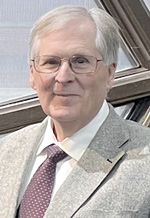By RAY ADLER
Ask Adler
 On Monday, April 25, the United States Supreme Court heard oral arguments on an important case involving freedom of speech and religion in public schools. The case, Joseph A. Kennedy v. Bremerton School District, has garnered a great deal of national attention.
On Monday, April 25, the United States Supreme Court heard oral arguments on an important case involving freedom of speech and religion in public schools. The case, Joseph A. Kennedy v. Bremerton School District, has garnered a great deal of national attention.
Joseph Kennedy, a Christian public-school football coach, began saying a brief, audible prayer on the 50-yard line of the football field after games. Problems arose for Coach Kennedy when players, students, and fans started joining him on field for prayer, and the Bremerton School District perceived Coach Kennedy’s actions as a school-sponsored endorsement of Christianity. After refusing to stop his post-game prayer, Bremerton fired Coach Kennedy.
The facts of this case, though strongly disputed, and the legal theories presented to the Supreme Court provide us with a great deal to consider. Chief among those considerations is the question: What must a public-school teacher leave behind when he or she enters the school premises?
In a seminal decision from 1969, Tinker v. Des Moines Independent Community School District, the Supreme Court declared, “It can hardly be argued that either students or teachers shed their constitutional rights to freedom of speech or expression at the schoolhouse gate.” Although the statement by the Supreme Court appears straightforward and intuitive, free speech rights among public-school teachers, especially as it relates to religious expression, has been almost entirely confined to an ambiguous sphere of “private” speech (i.e., personal views expressed outside his or her official role of teacher). It is argued that such a limitation is justified on the basis of the Establishment Clause of the First Amendment, which prohibits the government from establishing or unduly favoring one religion over another.
Notwithstanding the interesting proposition that no religion is in itself a form of religion (which in this column we do not have time to examine), I believe our courts and public schools have gone too far in eliminating all expressions of religion from the classroom. For if the argument is that religion is so delicate and personal that it must be relegated to the home, why not the same for theories on sex and gender or for critical race theory? Indeed, Justice Clarence Thomas posed this exact scenario when he asked, “If the coach, instead of taking a knee for prayer, took a knee during the national anthem because of moral opposition to racism … how would your school district respond?”
My point is not to engage in a game of “whataboutism” on what should or should not be allowed in schools, but to simply point out that religious expression by public-school teachers, administrators, and coaches has been overly restricted.
We live in a free society, with a variety of beliefs. Further, our public schools are staffed by living, breathing humans – many of whom possess deeply held religious convictions – not robots. Thus, while our public schools are not religious factories and unbridled religious expression and/or practice should not be maintained, is it not beneficial for our children to see their teachers and coaches for who they really are?
Does not, at the very least, our Constitution allow for a football coach to knee at the center of a football field and say a short prayer for the men he is charged to lead?
Educational material and not legal advice, written by the team at Adler attorneys. Email andrea@noblesvilleattorney.com with questions or comments.

It’s doubtful that the facts are ‘strongly disputed’ as suggested, the highest court in the land rarely accepts cases where the facts are still being argued, thats the charge of the lower courts. Interpretation of the law in the context of the US constitution is typically the perview of SCOTUS.
In this case ; the coach engaged in efforts to make it much more than a private prayer moment – he appeared in the media among other things & made efforts to intentionally render the issue contentious, the rub is that he did that while acting in the capacity of a public school employee. Enter ; the Establishment Clause of the First Amendment.
With the recent appointments to the Court – it’s apparent that we’d all better rethink the term ; ‘settled law’.
.
The most recent constitutional amendment ( 1992 ) took 202 years to become ratified.
The smart money is on ‘precedent’.